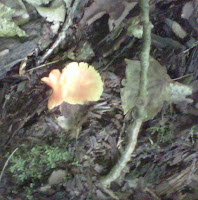It’s the time of year when the mushrooms start calling to you. They stand on the forest floor, perhaps with a shaft of sunlight illuminating them, and they whisper seductively how delicious they are.
This year is another banner mushroom year, likely because of the ample rains. The autumn mushrooms are popping up in a variety of wild colours: jet black, bright orange, earth-coloured shades.
I don’t listen to their calls anymore. Too dangerous. Ask Nicholas Evans, author of The Horse Whisperer, the popular novel that was turned into a movie starring Robert Redford and Kristin Scott Thomas. Three years ago he went mushroom picking in the Scottish Highlands. He found some along the edge of a pine forest, cooked them in butter and parsley, and served them to his wife, brother-in-law and his wife. Their lives changed dramatically after that meal.
His wife and brother-in-law are still on dialysis and waiting for kidney transplants. Evans received a new kidney recently from his adult daughter.
Evans was no stranger to mushrooms and had been picking them since he was a boy. But something went wrong that day. He picked some that were similar to an edible type he knows but they almost killed all four them.
 Mushroom misidentification and poisoning are not uncommon. Some time back a doctor wrote how he followed a mushroom picking guidebook and ended up in a New York hospital after becoming poisoned.
Mushroom misidentification and poisoning are not uncommon. Some time back a doctor wrote how he followed a mushroom picking guidebook and ended up in a New York hospital after becoming poisoned. Never believe any of those folk tales about how to tell good mushrooms from deadly ones. It is not true that brightly-coloured mushrooms are the deadly ones. You cannot safely test mushrooms by boiling them with a piece of silver that turns black from poison. Silver does not react to mushrooms of any kind.
One of the greatest dangers is that mushrooms that are edible in one geographic location, might not be in another. If you are going picking, make sure you know what you are doing.





